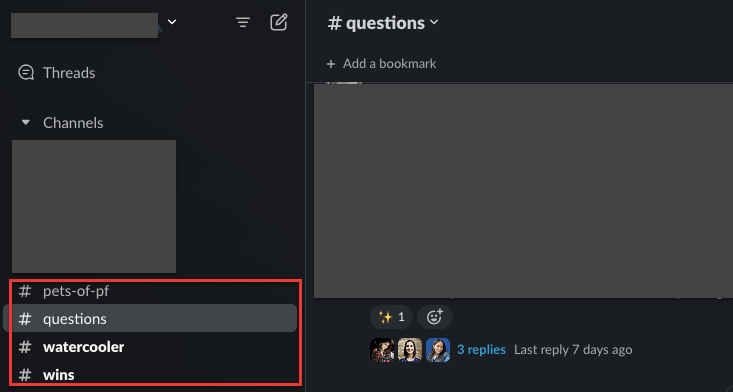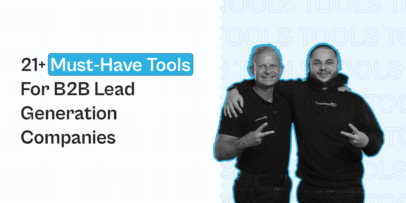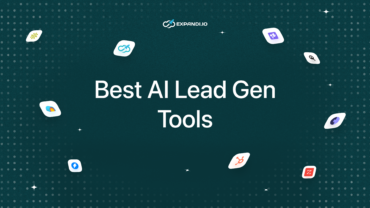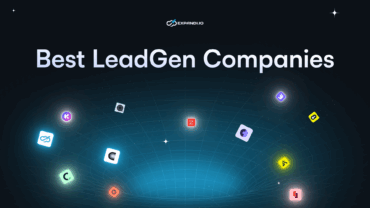Top 12 sales team communication tools
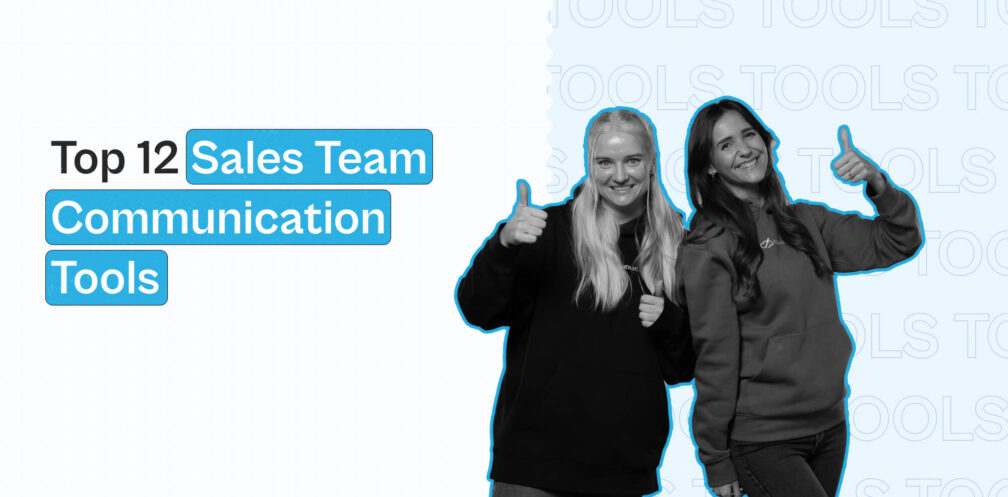
Sales operations involve more than cold calling and interacting with prospects. Smooth operations require a constant flow of communication between departments and colleagues.
However, the rise in hybrid and remote work can be isolating for sales reps who spend a major part of their day talking to clients. This can impact their collaboration skills and also stain performance in the long run.
Businesses must be quick to introduce sales collaboration and communication tools to help salespeople stay afloat.
This article can be your starting point. It covers the 12 best sales team communication tools in four categories.
1. Communication tools
Salespeople already have a lot on their plate. When they aren’t performing outreach on LinkedIn, they may be preparing presentations or attending demos.
So, having a centralized and dedicated base for instant internal team communication can be a boon for busy salespeople.
Expandi recommends using two tools:
Slack
Slack is a workplace messaging platform that can work well for sales team communication. Open discussions, private channels, direct messages, and conversation search—Slack is perfect and convenient for quick interactions.
Although largely a text-based conversation platform, Slack integrates with software like Dropbox, Google Drive, and more, allowing sales reps to share video files, presentations, and set up meetings.
Why we love Slack:
- Quick and easy installation
- A free basic version
- A centralized space where multiple teams, such as sales and marketing, can collaborate on tasks or have light-hearted conversations for a morale boost
- Easy navigation
Discord
Discord is a popular video calling and messaging app. It started as a community messaging app for video game users but is now also used by business people.
You can either install a Discord app or run it on your browser. The biggest plus point is the number of collaboration options Discord offers, which makes it perfect for internal sales use.
For example, you can set up and attend a video call with your teammates within Discord without having to jump on an external video tool like Skype or Zoom.
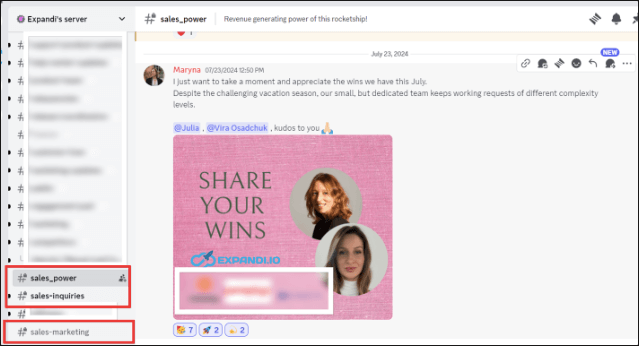
Expandi Sales Discord channels to collaborate with marketing, share wins, and discuss internal queries
Why we love Discord:
- Discussions and Forums are made easy
- Join external communities to talk to like-minded people in your industry
- User-friendly UI
- Most Discord servers are free of cost
- Instant screen sharing
2. Task tracking and sharing
Salespeople are juggling multiple tasks throughout the day. On one hand, they’re handling email outreach and cold calling, and on the other, they may be following up and nurturing leads.
With so much to do, it’s easy to lose track of activities and outcomes.
They need a task tracking tool or CRM to keep track of their leads, targets, KPIs, and conversations.
We have four sales team collaboration tools for easy task tracking and sharing for you:
Pipedrive
Pipedrive is a collaborative sales CRM that lets your team set up and track sales processes and pipelines, easily manage leads on custom dashboards, import and centralize sales data, and more.
Its simple drag-and-drop functionality minimizes the learning curve, allowing your team to quickly overview their sales pipelines.
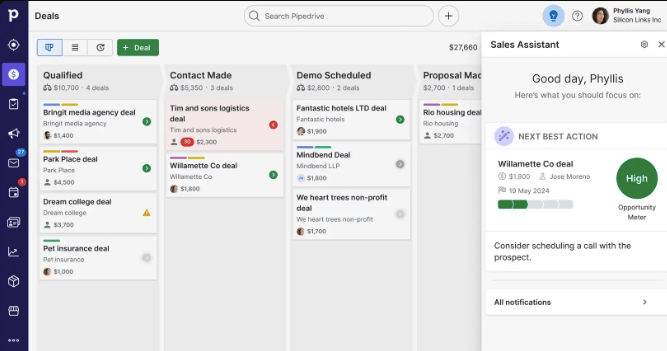
Why we love Pipedrive:
- All-in-one tracking of sales tasks like emails sent, meetings set up, and calls made in a centralized location
- Enables collaboration and communication between internal teams and stakeholders via threaded discussions
- Cost-effective plans that start from $12/month
- Actionable insights and suggestions on team performance
Asana
Asana is a project management tool that can be a great add-on for your sales collaboration. It’s easy Slack and Gmail plug-ins help you keep an eye on tasks progress and push actions to move them to the finish line.
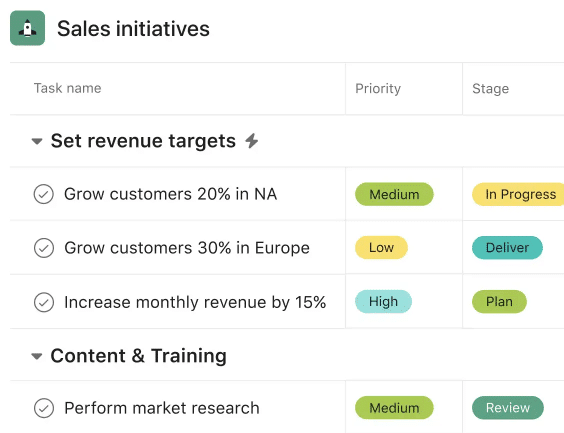
Be it small or large teams, Asana is highly scalable and improves sales productivity. Asana does not just support collaboration but also sales rep training by allowing you to link external training tools.
Why we love Asana:
- Easy for sales reps and managers to track and prioritize tasks
- Integrates with productivity, training, and CRM tools
- Monitor the status of sales goals and targets in one place
- Seamless messaging feature to distribute tasks and track progress made
Todoist
Todoist helps sales teams track shared tasks, deadlines, and projects. Its intuitive interface makes team collaboration and synchronization super simple.
From personal productivity features like individual task reminders to shared task tracking, Todoist has it all.
For example, your team can start collaborating by quickly joining dedicated channels to track a sale or project progress, set due dates, and assign responsibilities to ensure smooth deal closure.
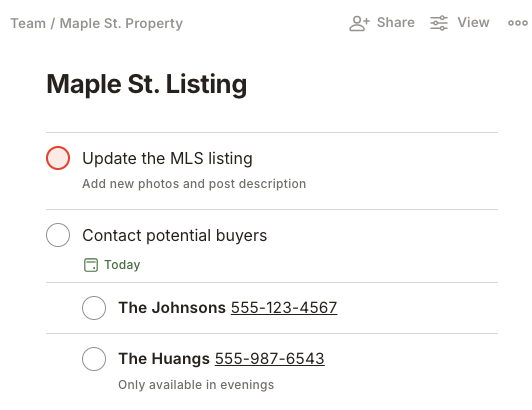
Why we love Todoist:
- An A-Z platform for task tracking and collaboration
- Never miss out on deadlines by sending timely reminders
- Apart from serious sales tasks, the team can also join groups to have light-hearted, off-work conversations
- Custom templates to create projects and agenda
Trello
Trello is another great option for uncomplicated sales task tracking. Trello helps manage sales workflows by letting your team use Trello boards to keep track of deals.
Trello offers sales templates, such as Sales Pipeline, Contract Review, and Customer Onboarding, so your teams don’t have to create a board from scratch to coordinate with their colleagues and keep them in the loop.
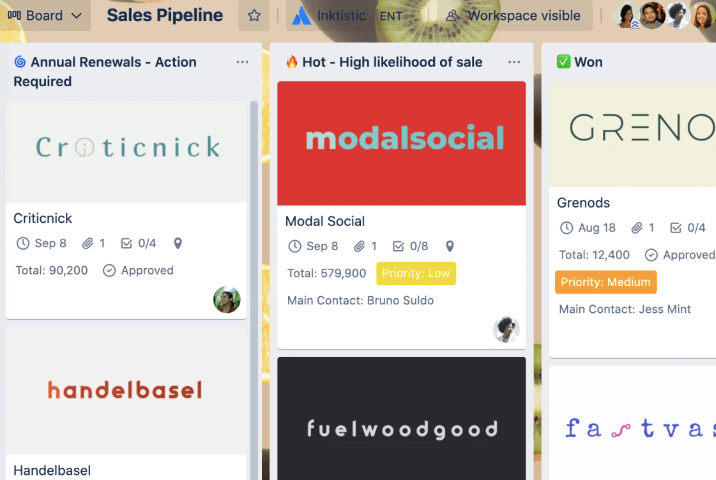
Why we love Trello:
- Visual and easy-to-use Trello boards for teams to keep track of their task progress as well as to see what others are up to
- Send teams real-time updates made to their boards and tasks by uploading comments, tagging them, and attaching files
- 10 pre-made sales workflow templates for sales pipeline tracking, custom onboarding, etc.
3. Sales enablement
Running a sales enablement strategy for a remote outbound sales team can be tricky. However, certain tools make this less challenging while helping sales reps sell more, onboard faster, and share knowledge with internal folks, regardless of their work locations.
Three sales enablement and collaboration tools that stood out to us are:
DocSend
DocSend is a safe document-sharing platform for managing, sharing, and tracking your most important sales and marketing collateral. Your team no longer has to attach files during conversations and can instead share a simple link.
For sales, DocSend has exclusive features, such as document analytics, that allow you to receive real-time notifications each time a prospect or colleague views or forwards your sales material or presentations.
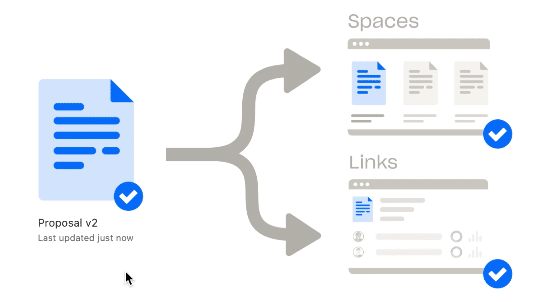
Why we love DocSend:
- Document analytics to see how your document links have been shared or accessed
- Know who the key stakeholders for a sales deal are by tracking if and how a link is forwarded
- Files can be updated even after sharing them
- Understand how long a prospect spends time on your proposal document and strategize deal closure and outreach process accordingly
Paperflite
A content management software exclusively for sales? That’s Paperflite for you.
Paperflite can save you and your sales team time by making it easy to organize all your sales and marketing content and track its performance.
For example, you send discovery emails with an attached document about a case study and use Paperflite to determine which case study page captured the lead’s attention the most and whether they are pursuable.
The tool also saves hours of sales rep time spent searching through folders of documents with its SmartSearch feature that lets sales reps choose content via a simple contextual search.
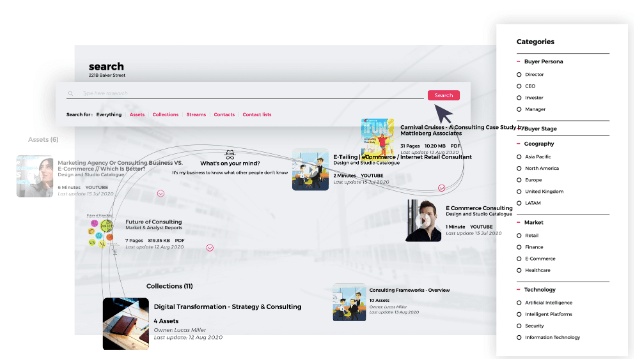
Why we love Paperflite:
- A dedicated notification center where sales reps can access changes made to their content
- A personalized content hub where every sales rep can add and manage sales content
- Reach the right prospects at the perfect time with pre-organized sales and marketing collateral
Notion
Notion is one of the most popular workspace management platforms out there. From docs to calendars and projects, Notion centralizes every guide, document, and notes.
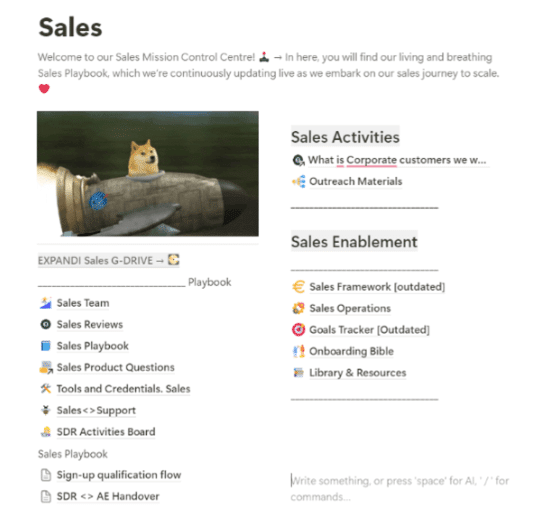
You can easily customize your files by creating labels, tags, owners, and more. The drag-and-drop interface adds to the user-friendliness. For example, you can drop in a to-do list, add files, and add sales activities on the go within a project.
Why we love Notion:
- Break down a project into multiple tasks, so your team can visualize what steps can help them cross the finish line
- Follows a minimalist and clean interface
- Information can be organized in various formats like databases, calendars, notes, etc.
- Offers sales templates for customer discovery, sales rollup, email outreach, and other tasks
4. Booking meetings
Sales teams need an easy scheduling and no-nonsense tool to carry out video communications with their colleagues and prospects.
We have the best tool suggestions to book meetings:
Calendly
Calendly is perfect for sales teams looking for a tool where they can connect with hot leads easily by setting up a meeting instead of sending countless follow-up emails.
For example, a sales rep can include a Calendly link to their meeting calendar within a LinkedIn message to the prospect and let them choose a convenient time.
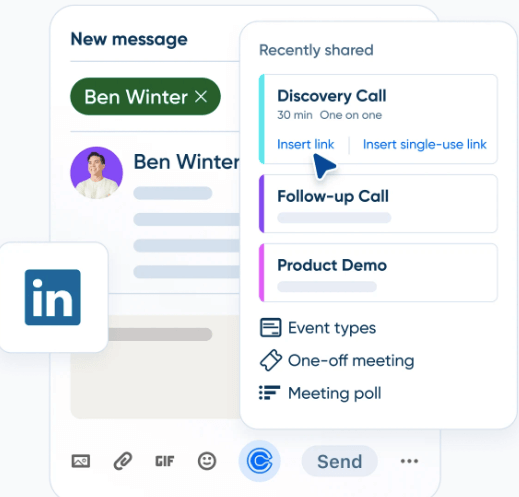
Why we love Calendly:
- Set up automated meeting reminders so prospects or teammates show up to the meeting on time
- Calendly team scheduling helps you drive more revenue by co-hosting meetings with your teammates and answering prospect queries on the go
- Integrate with Salesforce or HubSpot, so you match the booked qualified meetings to specific sales reps
- Meeting polls help you get prospect feedback during the meeting
Zoom
Zoom has been a boon for remote teams looking to conduct instant video conferences, client meetings, webinars, or team collaborations. Its super simple interface and ability to share screens and record meetings have made Zoom a corporate favorite.

Why we love Zoom:
- High-quality screen recording
- Quick and easy setup of virtual meetings
- The Zoom Workplace tool lets you streamline internal communications and increase engagement with its exclusive features like Team Chat, Rooms, and Whiteboard
- Summarize meetings and quickly share the summary via chat or email to save time
Fireflies.ai
Fireflies is a rich note-taking app that can also be used to coach reps and close deals.
How?
Fireflies integrates with your internal CRM and fills it with call logs, notes, and meeting transcripts so your sales reps can focus on the prospect conversation instead of juggling between taking notes and creating meeting minutes.
Sales managers can listen in on client-sales rep conversations and drop insights or coaching recommendations.
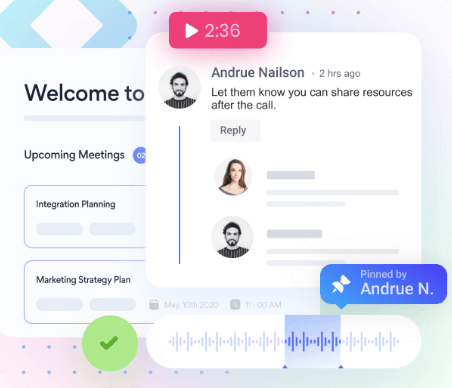
Why we love Fireflies.ai:
- In-built conversation intelligence that fetches valuable meeting insights, such as key topics discussed, sentiments, etc.
- Smart Search enables search via keywords that look through meeting transcripts and conversations
- Just upload a meeting recording and let Fireflies generate an auto-transcript for you
- Soundbites turns key parts of a client or team meeting conversation into shareable audio files
Wrapping up
The ideal sales team communication tool should blend into your sales workflows and boost productivity.
While these collaboration and productivity options can bring in the much-needed respite from routine tasks, adding automation into the mix can help your sales team work much faster with greater efficiency.
Expandi is one such LinkedIn outreach automation tool that can make a huge difference in deal closures and building healthy prospect connections.
You’ve made it all the way down here, take the final step
